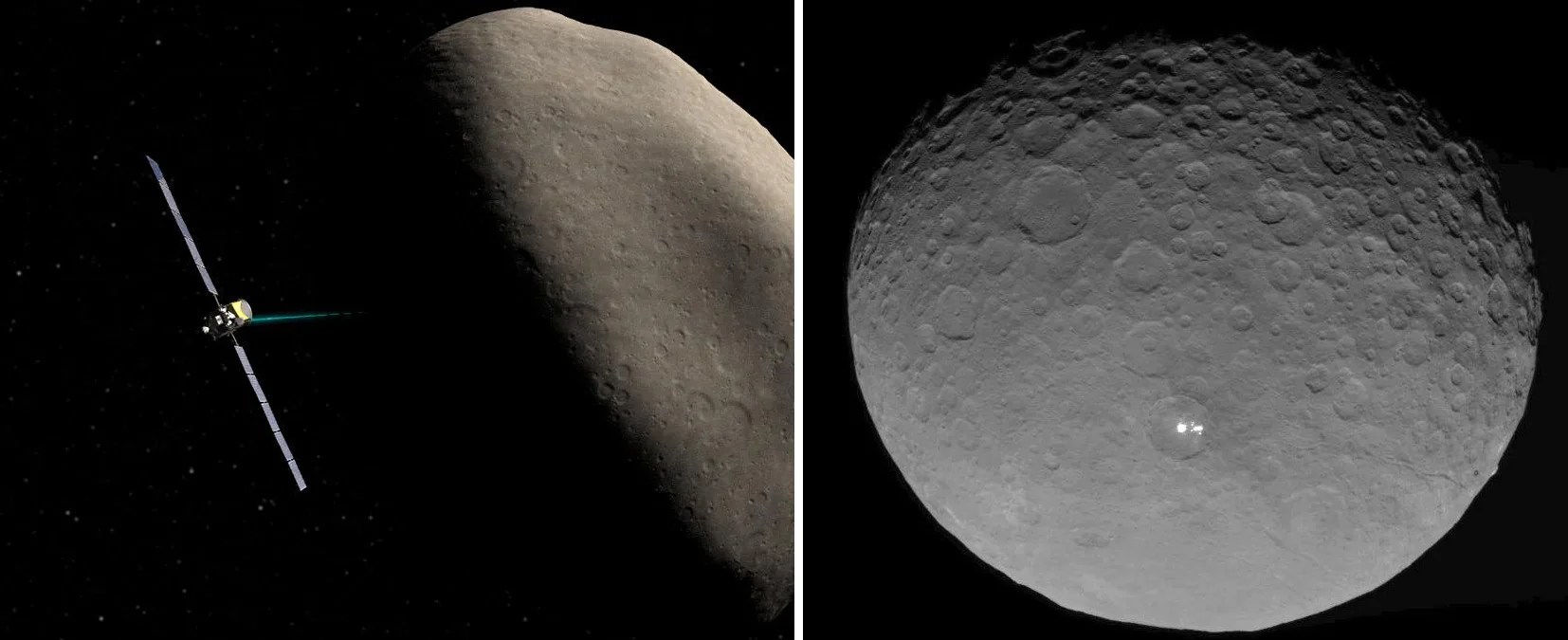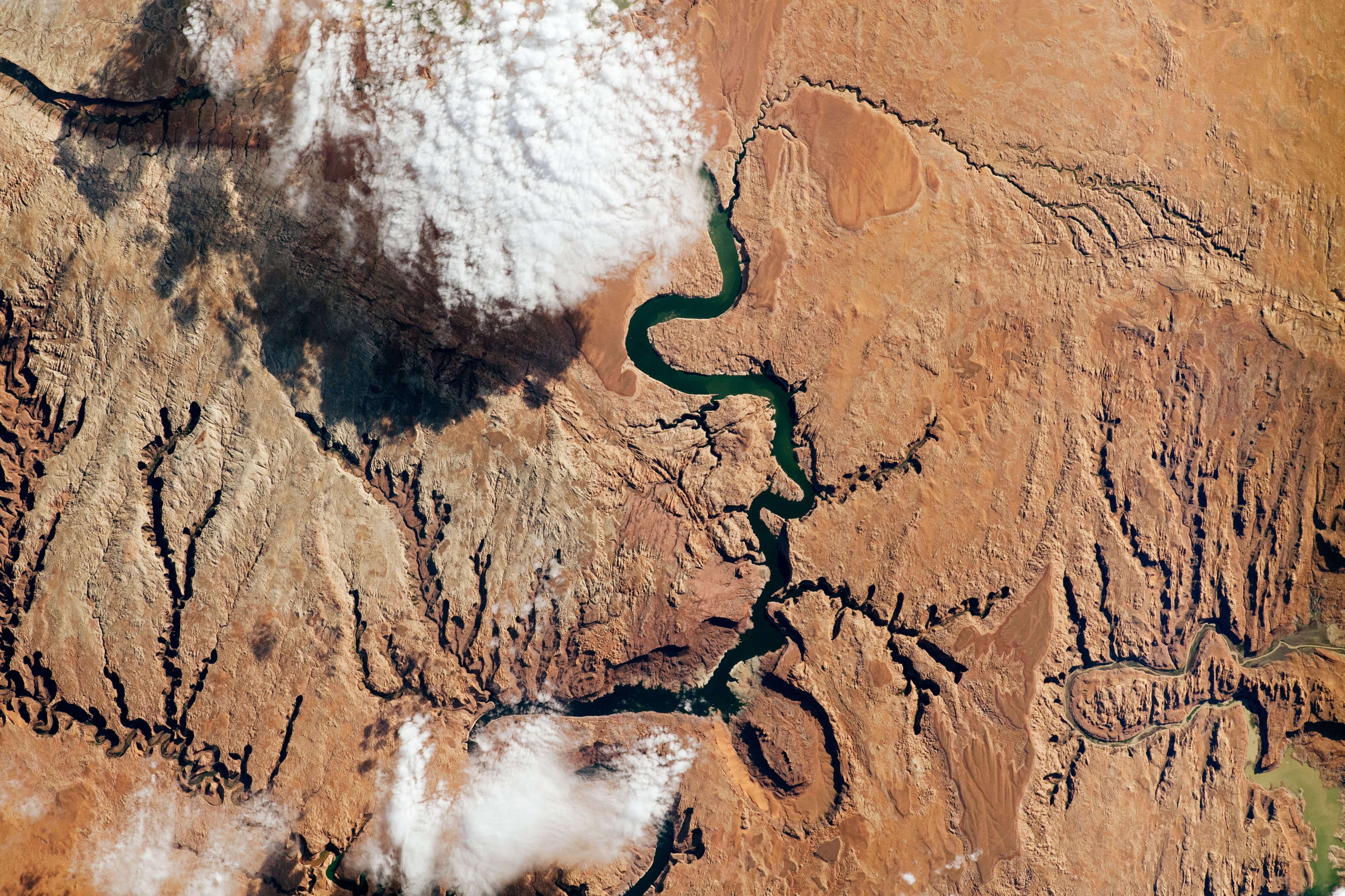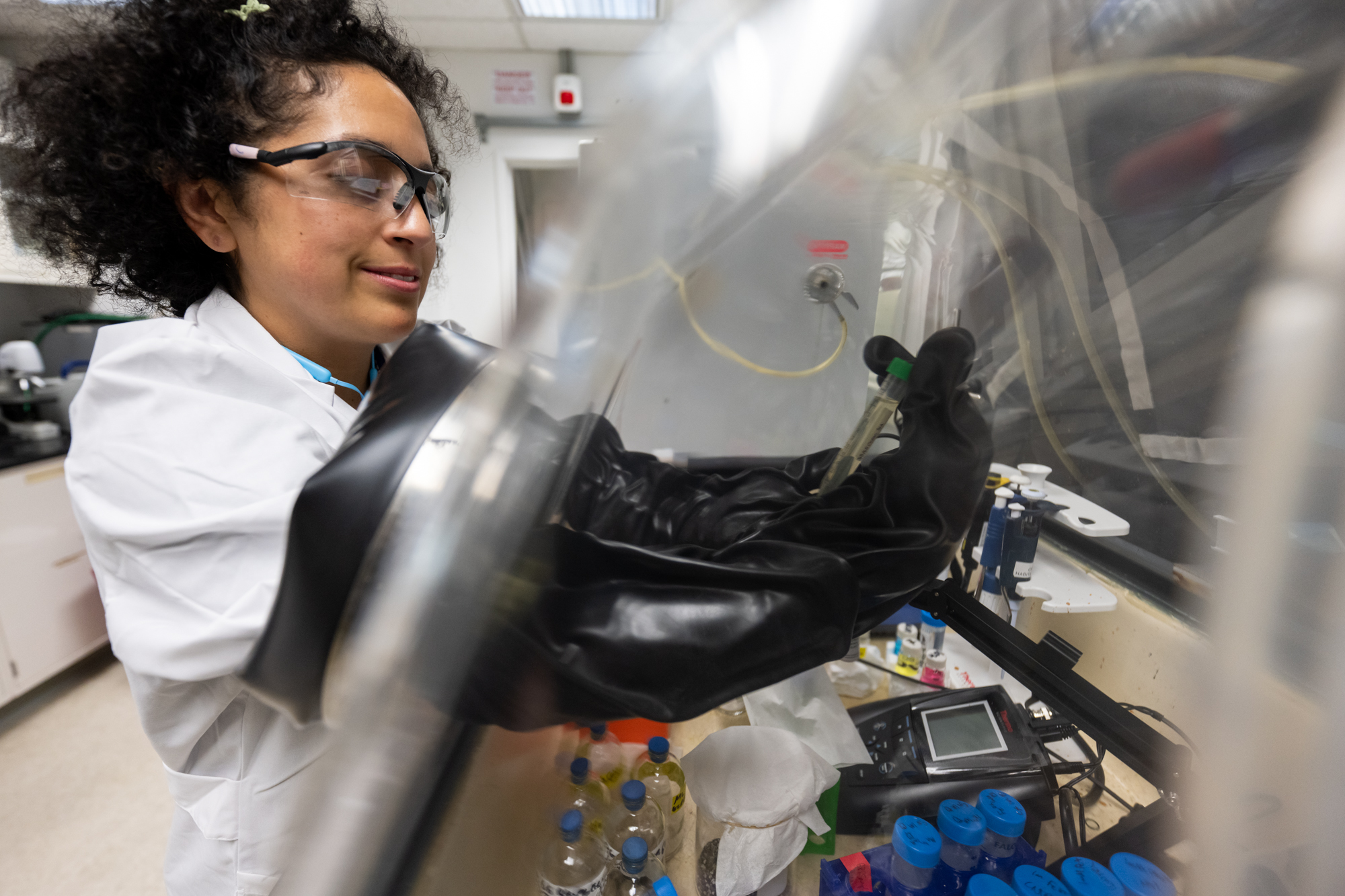4 min read
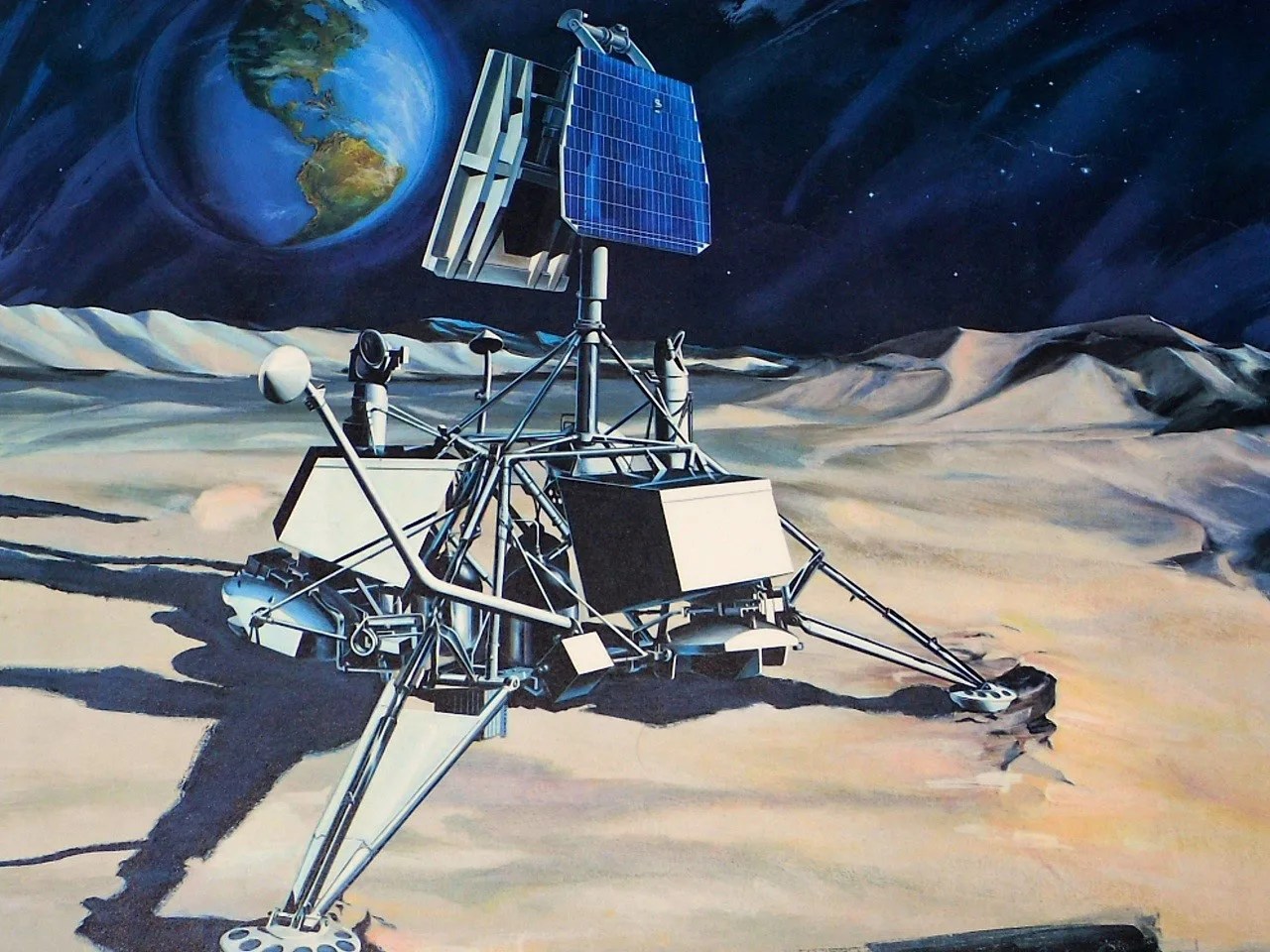
Even the most ambitious plans start with a drawing. Visualizing a distant destination or an ambitious dream is the first step to getting there. For decades, artists working on NASA projects have produced beautiful images that stimulated the imaginations of the people working to make them a reality. Some of them offered visualizations of spacecraft that had not yet been built; others imagined what it might look like to stand on planets that had not yet been explored. This week, we look at 10 pieces of conceptual art for NASA missions before they were launched--along with actual photos taken when those missions arrived at their destinations.
In 1968, an artist with NASA contractor North American Rockwell illustrated a phase of the Apollo lunar missions, showing the Command and Service Modules over the surface of the Moon. In 1971, an astronaut aboard the Lunar Module during Apollo 15 captured a similar scene in person with a camera.
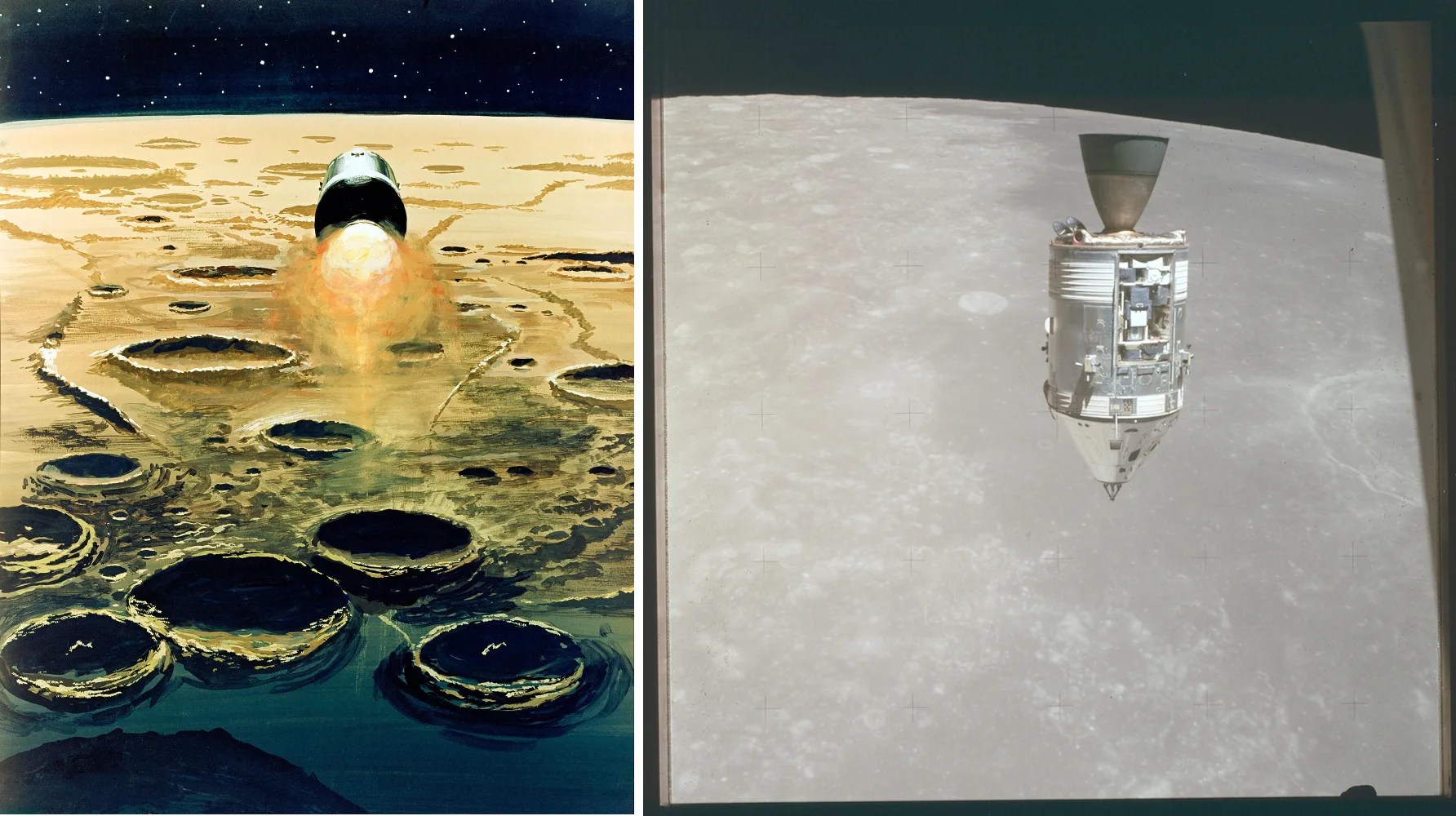
This artist's concept depicts an Apollo Lunar Module firing its descent engine above the lunar surface. At right, a photo from Apollo 12 in 1969 showing the Lunar Module Intrepid, taken by Command Module Pilot Richard Gordon.
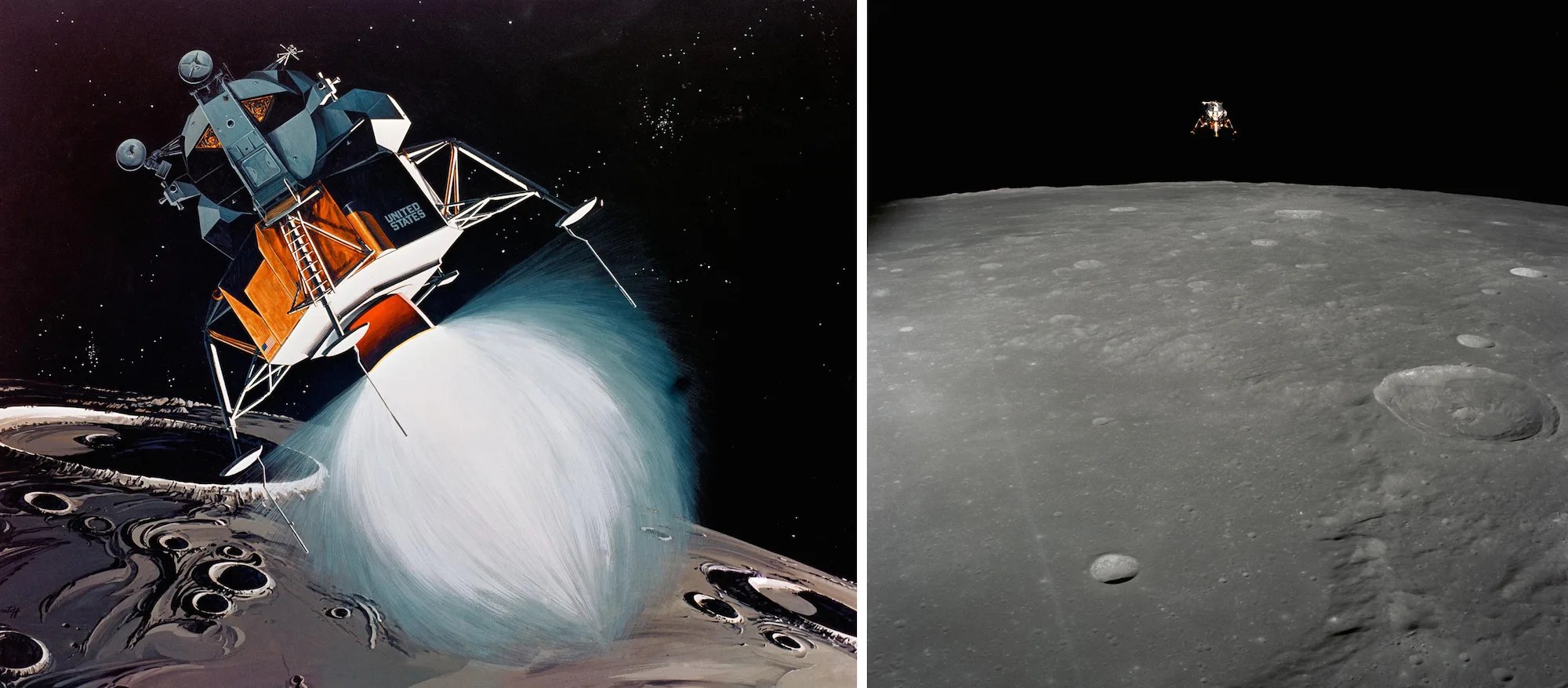
Carlos Lopez, an artist with Hughes Aircraft Company, created a preview of a Surveyor spacecraft landing for NASA's Jet Propulsion Laboratory in the early 1960s. The robotic Surveyor missions soft landed on the Moon, collecting data and images of the surface in order to ensure a safe arrival for Apollo astronauts a few years later. In the image at right, Apollo 12 astronaut Alan Bean examines the Surveyor 3 spacecraft during his second excursion on the Moon in November 1969.
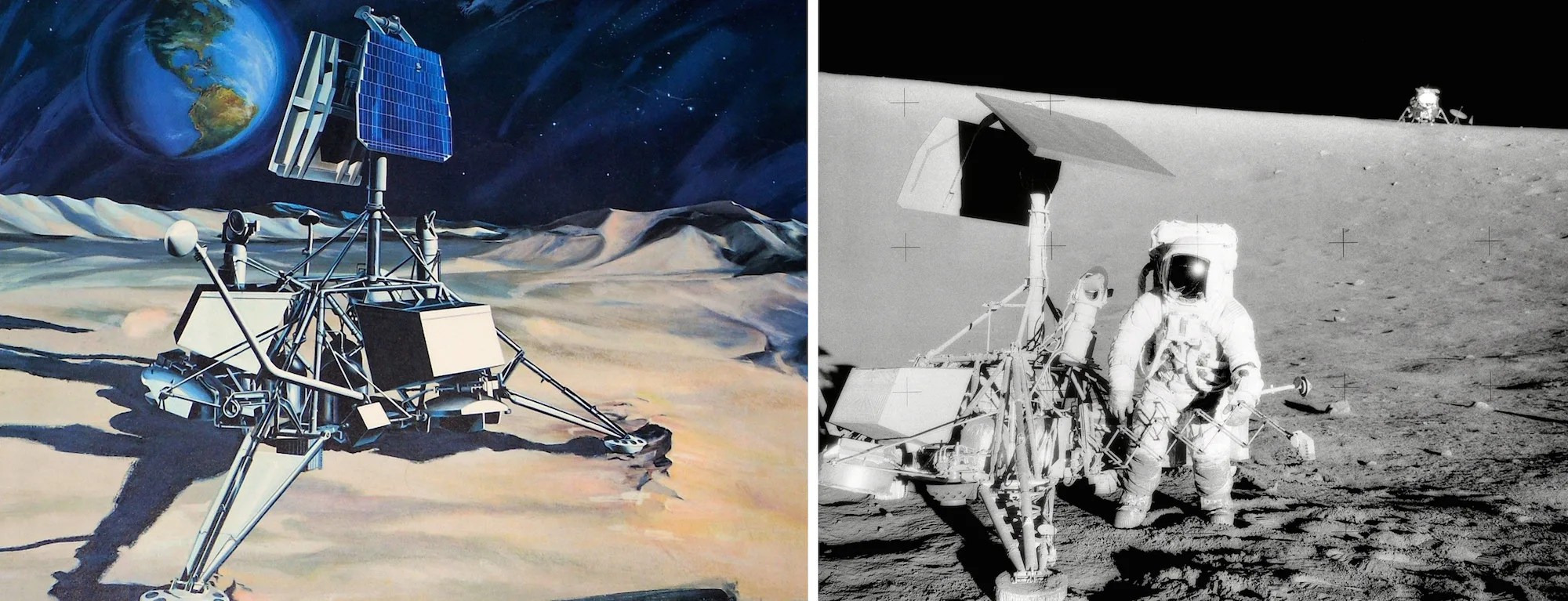
In missions that lived up to their names, NASA sent the Pioneer 10 and 11 spacecraft to perform the first up-close exploration of the outer solar system. At left, an artist's imagining of Pioneer passing Jupiter. At right, Pioneer 11's real view of the king of planets taken in 1974.
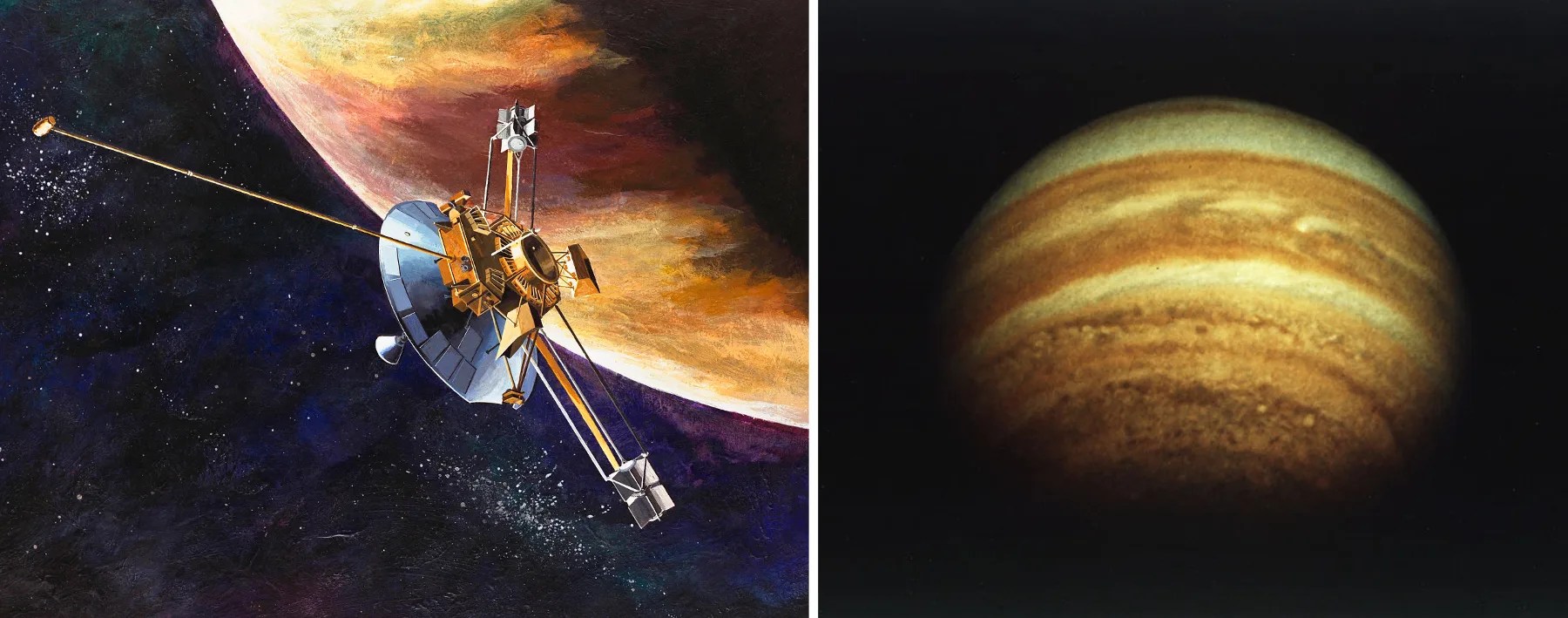
An even more ambitious pair of robotic deep space adventurers followed the Pioneers. Voyager 1 and 2 both visited Jupiter and Saturn. Voyager 2 went on to Uranus and Neptune. Even the most visionary artists couldn't imagine the exotic and beautiful vistas that the Voyager spacecraft witnessed. These images were taken between 1979 and 1989.
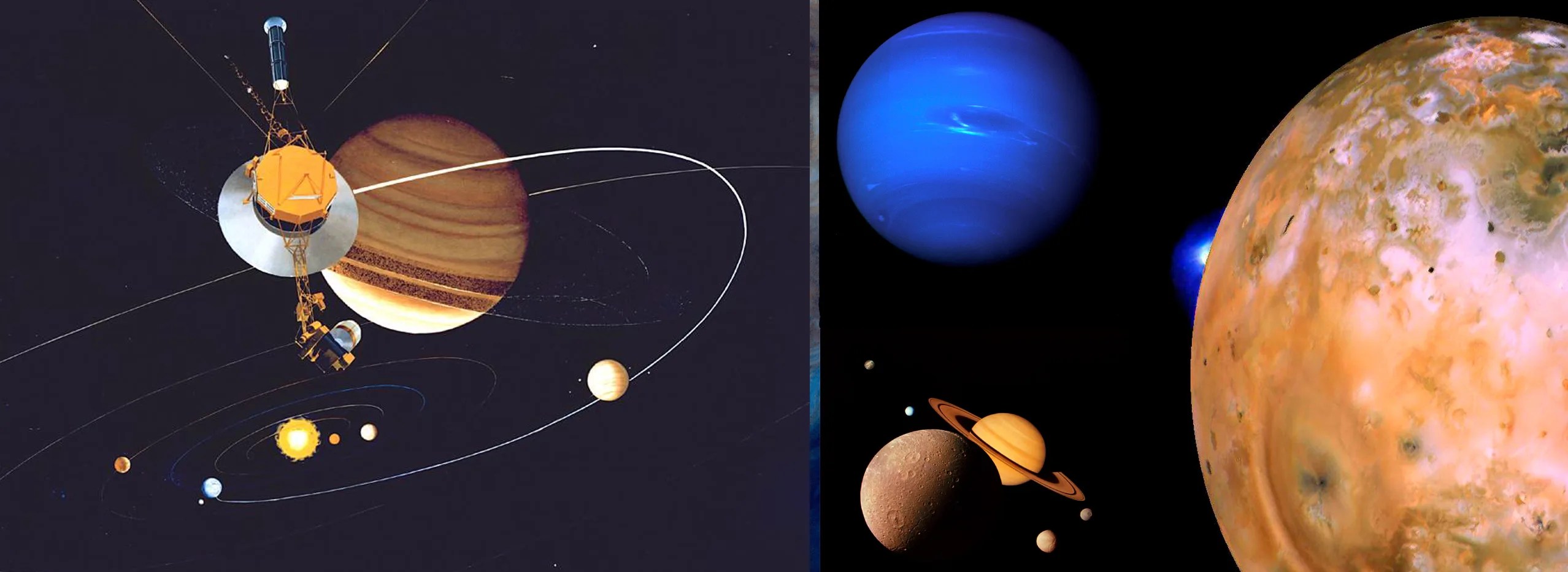
NASA's Cassini spacecraft carried a passenger to the Saturn system: the European Space Agency's Huygens probe. Huygens was designed to land on Saturn's planet-sized moon Titan. At left is a view of Cassini sending the Huygens probe on its way toward Titan, by artist Michael Carroll, and at right are some actual images of the giant moon from Cassini's cameras.
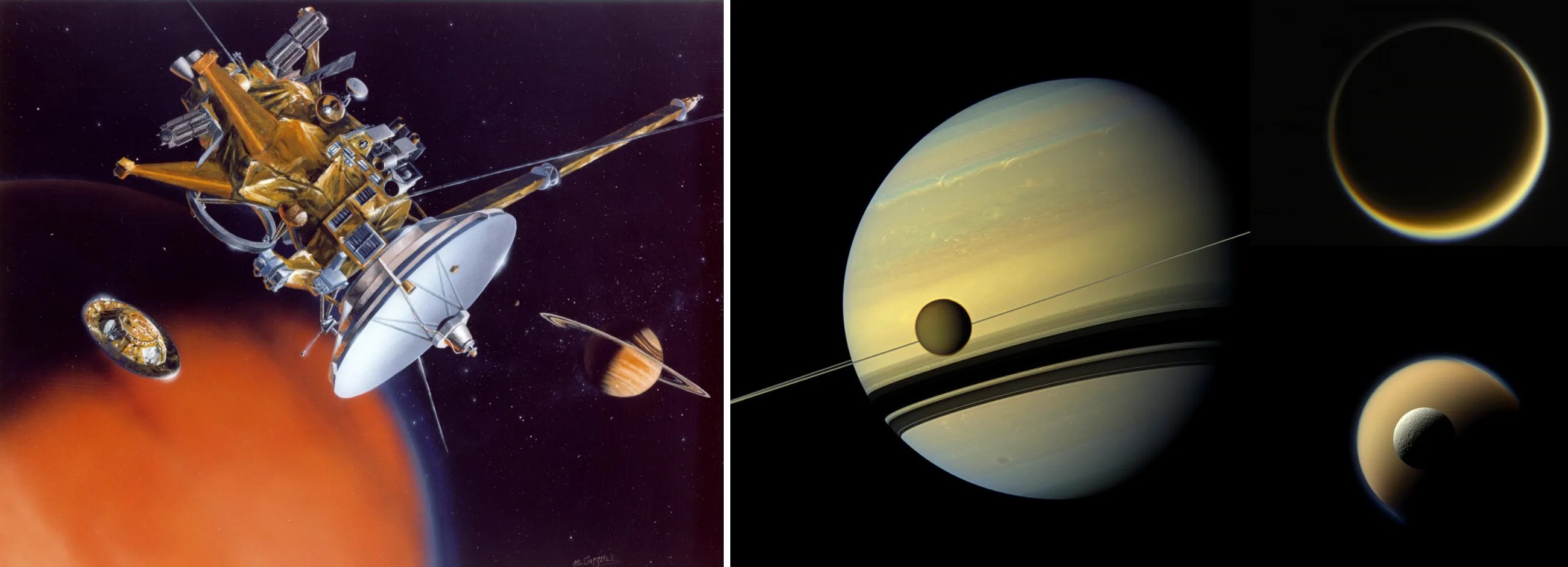
On Jan. 14, 2005, the Huygens probe descended through Titan's thick haze and revealed what Titan's surface looks like for the first time in history. Before the landing, an artist imagined the landscape (left). During the descent, Huygens' imagers captured the actual view at four different altitudes (center)—look for the channels formed by rivers of liquid hyrdocarbons. Finally, the probe came to rest on a pebble-strewn plain (right).
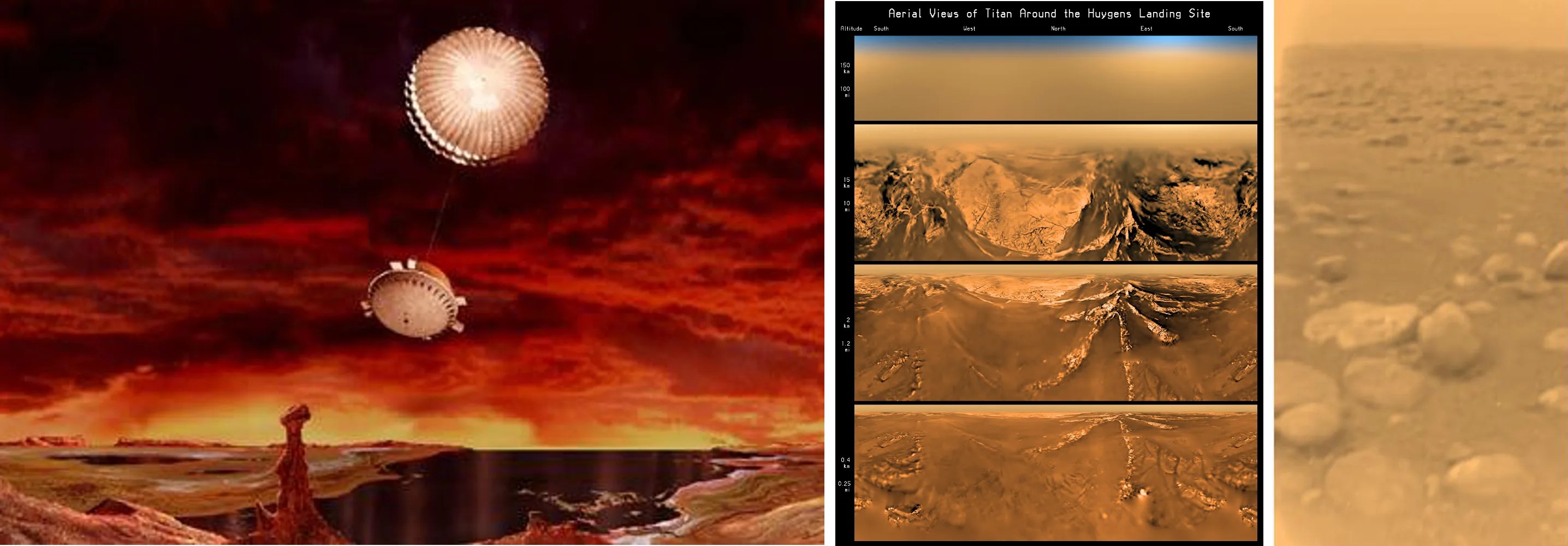
David Seal rendered this imaginary view from the surface of Pluto, and in the sky above, an early version of the spacecraft that came to be known as NASA's New Horizons. At the time, Pluto was already suspected of having a thin atmosphere. That turned out be true, as seen in this dramatic backlit view of Pluto's hazy, mountainous horizon captured by one of New Horizons' cameras in 2015.

Long before it landed in Gale Crater, NASA's Curiosity rover was the subject of several artistic imaginings during the years the mission was in development. Now that Curiosity is actually rolling through the Martian desert, it occasionally stops to take a self-portrait with the camera at the end of its robotic arm, which it uses like a selfie stick.

No one knew exactly what the dwarf planet Ceres, the largest body in the asteroid belt, looked like until NASA's Dawn mission got there. Dawn saw a heavily cratered world—with a few surprises, such as the famous bright spots in Occator crater.
